Nebulae are some of the most beautiful objects to look at in the night sky and are a common target for astrophotographers looking to take a striking, colourful image.
Ever since the creation of the telescope, astronomers have gazed upon these billowing clouds of dust and gas and – just as people do with more earth bound clouds – have seen shapes and figures within their forms.
It’s often from these shapes that nebulae gain their popular titles, and if you look down the roster of nebulae names, there’s one subject that comes up over and over again: animals.
There is an entire cosmic menagerie out there. Here are 10 of the best animal-themed nebulae.
Read more about nebulae:
- A beginner's guide to nebulae
- The best nebula astrophotos sent in by readers
- Hubble Space Telescope's glorious view of the Orion Nebula
1
Horsehead Nebula

In 1888, Scottish astronomer Williamina Flemming was taking a closer look at a photographic plate of the Orion Molecular Cloud Complex when she noticed a shadow in the unmistakable shape of a horse's head.
The dark curl of dust is part of a giant stellar nursery, and is thought to contain enough mass to create around 30 Sun-like stars.
2
Jellyfish Nebula
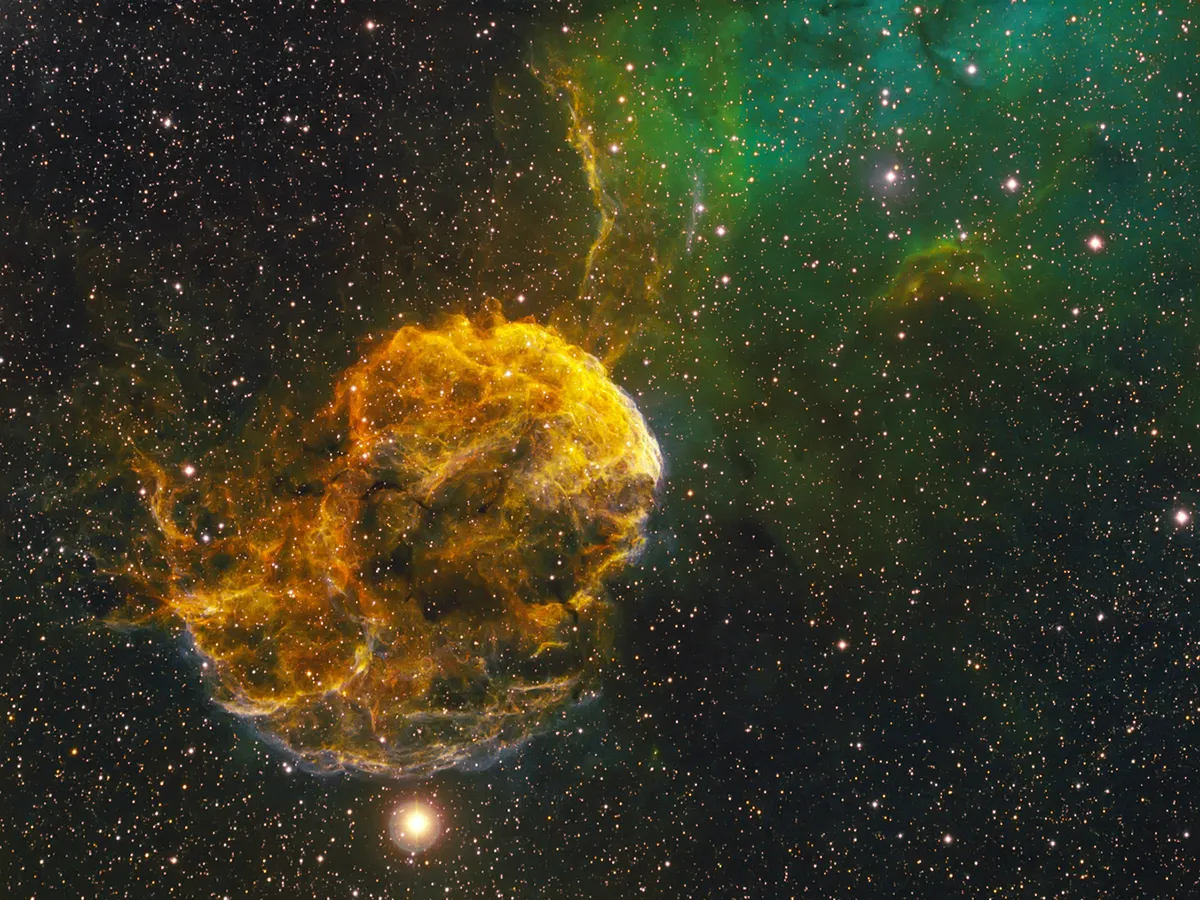
Around 10,000 years ago a star went supernova,blowing out a cloud ofdust and gas.Thecloud hasexpanded to take the shape ofthe bulbous body and trailing tendrils of a 65 lightyear wide jellyfish.
The Jellyfish is an emission nebula, meaning we can see it because the hot gas of the cloud is emitting light.
The colour of nebulae depends on which gases are present, though most photographers use filters and image processing to make them appear more vivid than they are in reality.
3
Owl Nebula
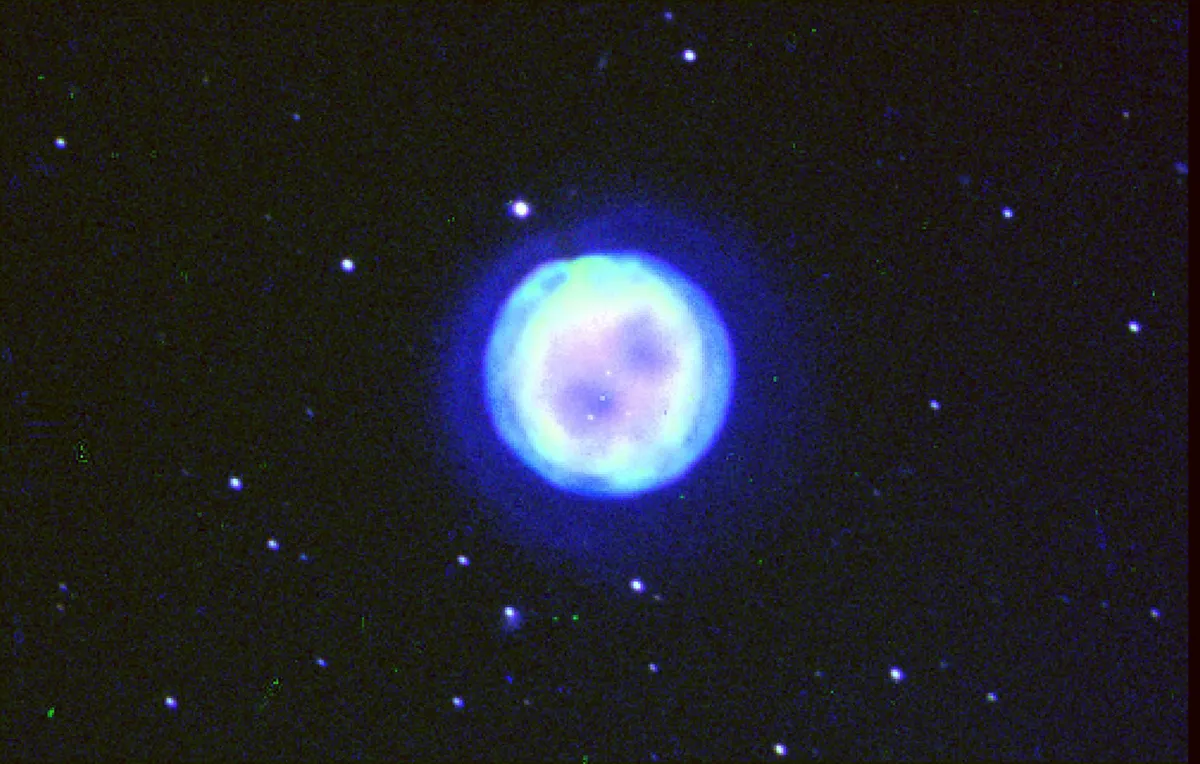
The face of this cosmic owl is created by a bubble of gas flowing out from an ageing star in UrsaMajor.
Due to their round shape, such nebulae are know as planetary nebula - though in reality they have nothing to do with the formation of planets.
The haunting eyes of the Owl Nebula are two dark patches, marks created by an asymmetric inner shell of cosmic material.
4
Tarantula Nebula

With long tendrils extending like scuttling legs, theTarantula Nebula isdefinitelynot one forarachnophobes.
This spider is huge, measuring as much as 1,900 lightyears across and making it one of the largest HII regions in the Local Group.
At the core of the sprawling nebula lies star cluster NGC 2070, but the Tarantula is better known for one of the stars in its outer regions that became Supernova 1987a, the closest supernova to Earth observed since the invention of the telescope.
5
Butterfly Nebula

The Butterfly Nebula earns its names from its 3-lightyear long wings, formed from gas pouring out of a dying white dwarf.
As the star meets its end, it's throwing out gas from its poles at over 1 million km per hour, creating two immense lobes in the shape of an hourglass or, as seen from Earth, a butterfly.
Though the star itself is surrounded by a ring of dust, its incredibly high surface temperature – estimated at 250,000ºC – glows brightly when viewed in the ultraviolet.
6
Elephant's Trunk Nebula

A dark trail of gas in the constellation of Cepheus forms a 20-lightyear long trunk of a galactic sized elephant.
The trunk is part of a much larger region, IC 1396, which is a region where many young stars are being formed.
When astronomers viewed the region in the infrared, they found more than 250 young stars hiding in the dust of the Elephant's Trunk.
7
Snake Nebula

The Snake Nebula is what's known as a dark nebula - meaning the nebula's shape comes from blocking out light behind it rather than the glow of the cloud itself.
The coiling form is created by a lane of dust, which creates a sinuous shadow against the background stars in the shape of a snake.
The nebula is a small part of the larger (also animal themed) Dark Horse Nebula which obscures part of the Milky Way's bulge.
8
Eagle Nebula
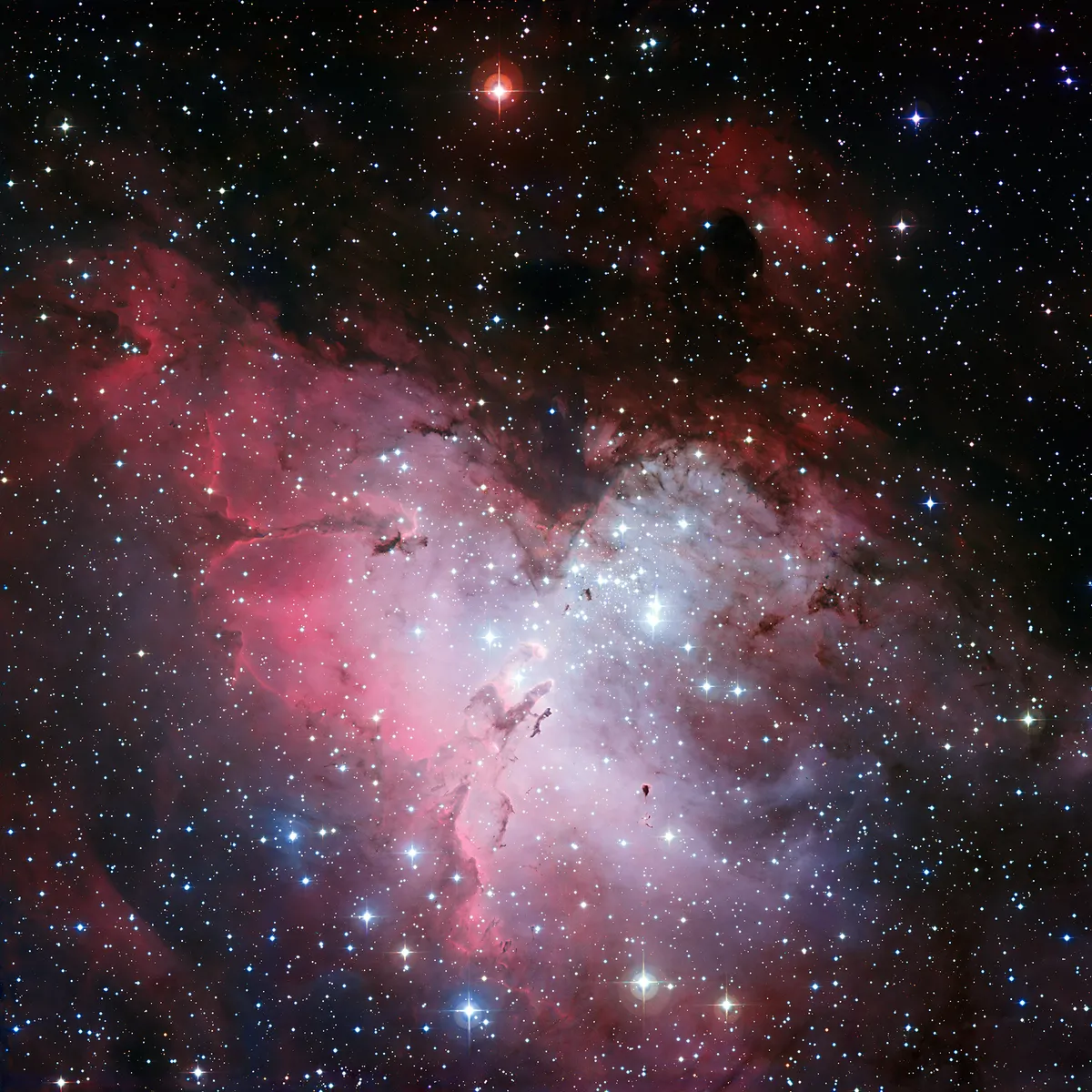
Around an open cluster of stars in the constellation of Serpens is a wide cloud of hydrogen in the distinctive shape of an eagle coming in to land, earning this target, also known as M16, the nickname the Eagle Nebula.
Nested under the eagle's wing are the towering forms of the Pillars of Creation, a star-forming region made famous in a spectacular photograph taken by the Hubble Space Telescope.
9
Giant Squid Nebula
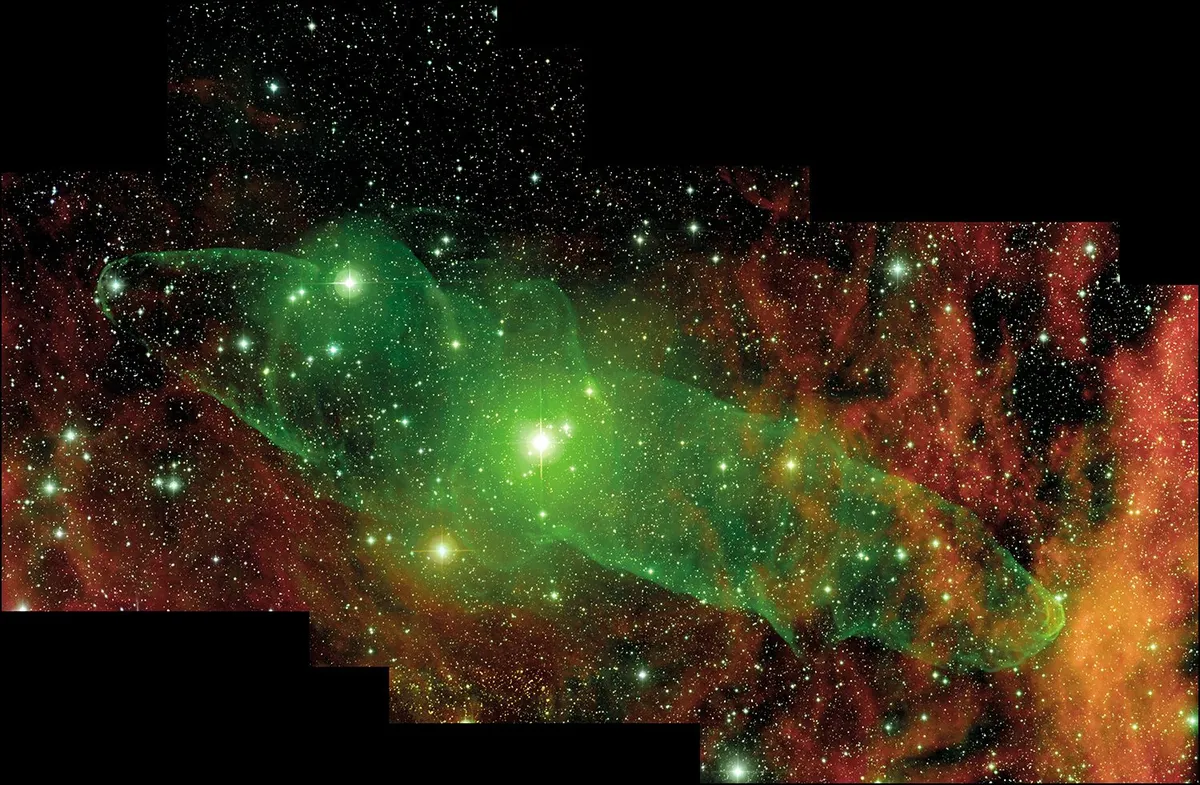
The Giant Squid Nebula certainly lives up to its name – it's a colossal 50 lightyears long.The nebulae was only discovered in 2011 by French astrophotographer Nicolas Outters.
The main body of the squid is created by the glow of doubly ionised oxygen gas (here shown in green), which stands out against the red glow of hydrogen around it.
10
Crab Nebula

In the 1770s, comet hunter Charles Messier was trying to hunt down Halley's comet, when he found a diffuse object he thought might be it.
After extensive observations he realised it wasn't moving. Frustrated, he decided to make a list of these objects so he didn't make the same mistake again and labelled the first one Messier 1.
Years later in 1844, Anglo Irish astronomer Lord Rosse made a drawing of Messier 1, and decided that the many tendrils coming out from the main body of the cloud made it look rather like a crab. Hence its popular nickname, the Crab Nebula.
11
Manatee Nebula
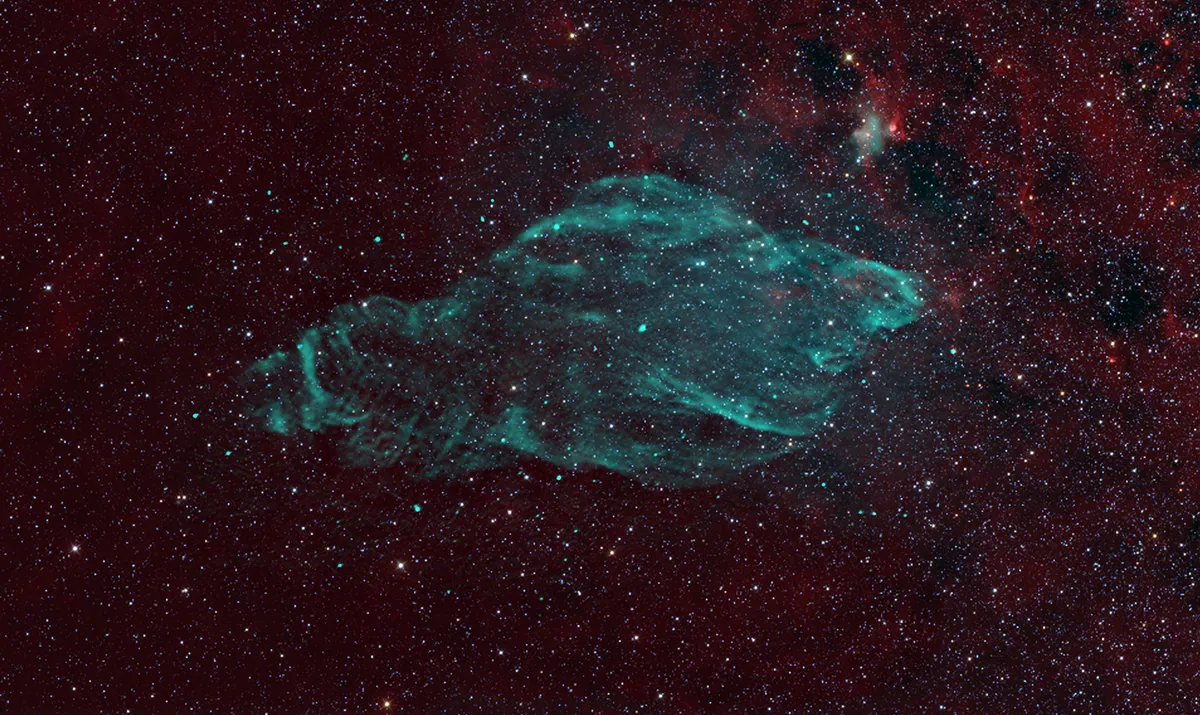
The final creature on our list is a slightly different beast to those that have gone before: it's only visible at radio wavelengths.
As such, it only officially received its moniker from National Radio Astronomy Observatory in 2013 at a special ceremony at Crystal River Refuge, home of the largest natural concentration of manatees in Florida.
Ezzy Pearson is BBC Sky at Night Magazine's News Editor.
